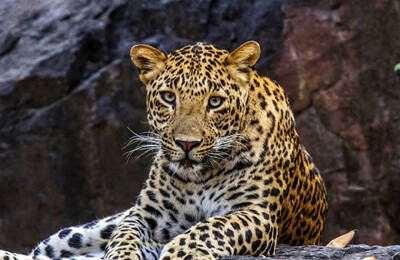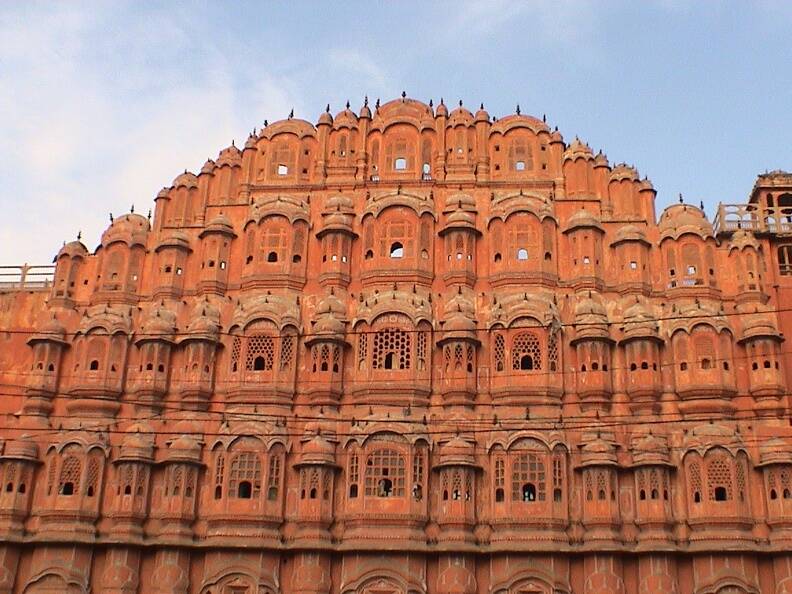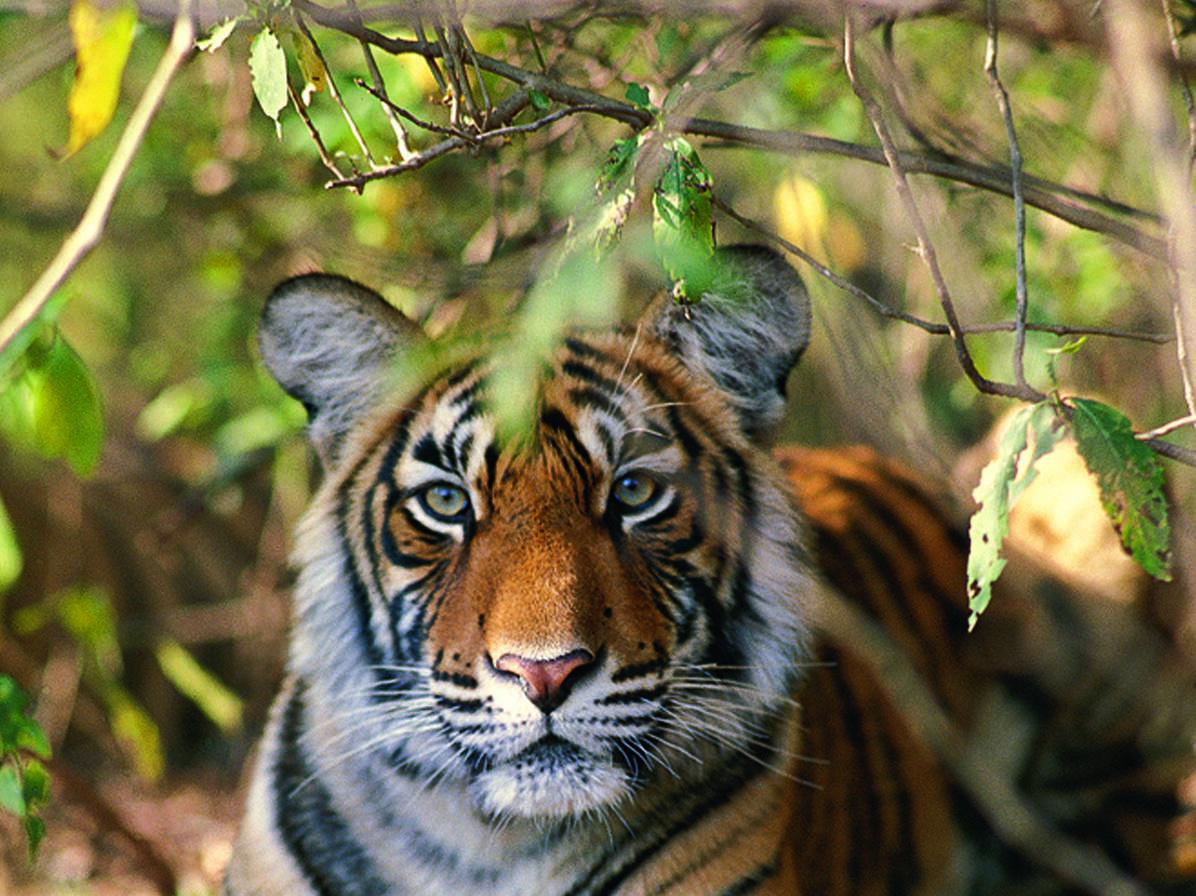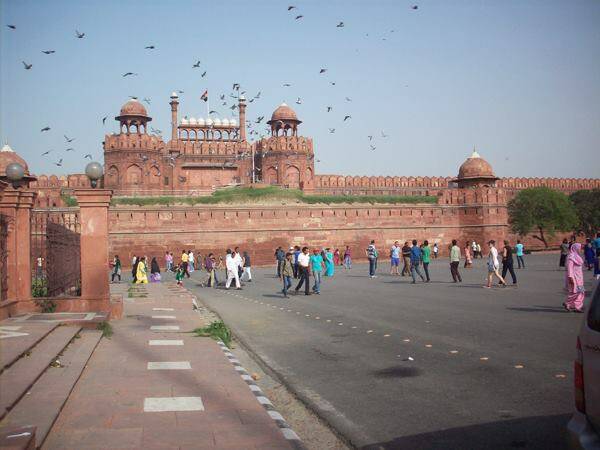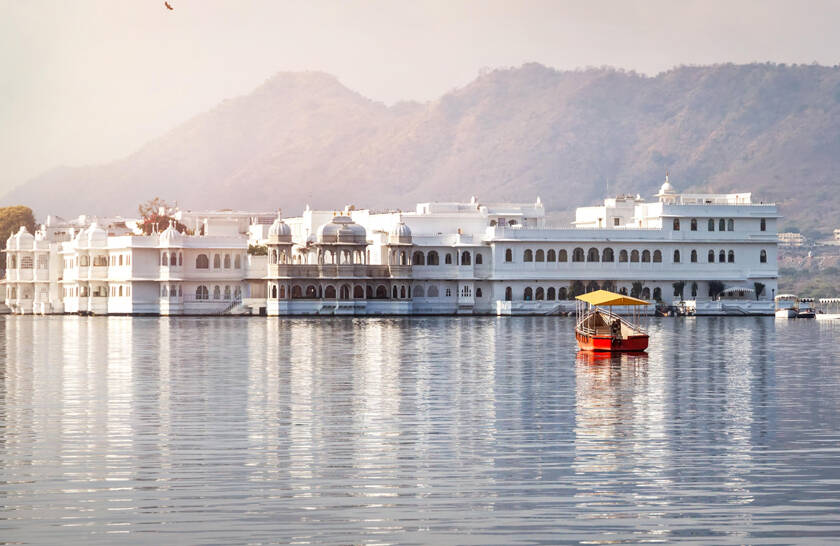Available to Club Members Only.
Visit the classic sites of Rajasthan with a focus on both the cultural and natural heritage. Highlights include the Taj Mahal, the fascinating cities of Jaipur and Udaipur, and Ranthambore tiger reserve and Jawai - known for its reliable sightings of Leopards.
Day 1: Arrive Delhi
After clearing Customs and Immigration, step into the receiving area, where our representative will meet you and take you to the vehicle for your drive to your hotel.
Delhi is a dynamic city where the past coexists with the present. While historic evidence shows that the area around Delhi was first occupied around 2,500 years ago, Hindu mythology predates that by another 500 years. The British captured the city in 1803 and when they decided to make it the capital of India in 1911, they commissioned Sir Edwin Lutyens to draw up the plans. The result is slightly surprising with spacious tree-lined avenues punctuated with architecture which is among the most striking in the world. Arrive at the hotel and check-in. 2 nights Suryaa Delhi or similar
Day 2: Delhi (B)
After breakfast, experience the combined charm of Old and New Delhi. On the tour of “Old Delhi,” you will head out to explore this exotic locale with its narrow dirt roads, myriads of people and inexpensive and colorful bazaars that keep alive the traditional workmanship for which Delhi has always been famous. Drive past the Red Fort, and visit the Jama Masjid, one of the largest Muslim mosques in India. A bicycle rickshaw will take you into the heart of Chandni Chowk (the silver square - so named because of the silver merchants).
Drive past India Gate, a 42-metre archway built in memory of Indian soldiers killed during the First World War and Rashtrapati Bhawan, built in the early 20th century as the Imperial residence of the Viceroy. Today, it is the official residence of the President of India. Thereafter, visit the most prominent Sikh Gurdwara, or Sikh house of worship, in Delhi. It was originally a bungalow belonging to Raja Jai Singh, a 17th century Indian ruler. It is open to people of all faiths, castes or creeds. The premises house a sacred pond in which devotees bathe. They believe that this would wash off their misdeeds and thus allow them to attain peace of mind. The 'Langars' or the community kitchen proves to be the ideal example of prodigious hospitality of the Sikhs. Anyone and everyone can have scrumptious meal irrespective of caste, color or class. From here, visit the capital's most striking monument; the 70-meter high Qutab Minar. Post visit of monument return back to the hotel and relax, rest of the day will be at leisure.
Day 3: Delhi / Agra (210 kms / 130miles / 3.5 hrs. approx.) (B)
After breakfast, check-out and drive to Agra.
Agra's history is largely recognized with Mughal Empire, the place was established much before it and has linkages since Mahabharata, the Mythological history. The golden age of the city began with the Mughals. Akbar made it the center of art, culture, commerce and learning. During the peaceful reign of Shah Jahan, his passion for architecture came to the fore and the world-famous architectural masterpieces were constructed including the Taj Mahal.
Arrive Agra and visit the imposing Red Fort of Agra (also known as Agra Fort). A creative, architectural, and strategic masterpiece, the Fort is protected as a UNESCO World Heritage site. In a cruel twist, Emperor Shah Jahan, builder of the Taj Mahal and whose grandfather built the original Fort and who also assumed the throne himself, was imprisoned here at the end of his life by his own son – in a room looking out on the Taj Mahal across the river. Later check-in to the Trident Agra or similar.
In the afternoon savour a travel highlight as you embark on a tour of the Taj Mahal (Closed on Friday), the magnificent tomb of white marble built by Emperor Shah Jahan in memory of his beloved wife Mumtaz, who had implored her husband to build a monument symbolizing their undying love for each other. Some 20,000 labourers and artisans from around the world spent 21 years constructing what became Mumtaz’s mausoleum, which was begun in 1632. Along with its exquisite symmetry, the Taj features striking examples of pietra dura, a decorative art in which craftsmen embed precisely cut semi-precious stones in marble to form dazzling patterns.
Day 4: Agra – Bharatpur by road (60 kms / 37 miles / 1.5 hrs. approx.) then board train for Ranthambore (Kota Jan shatabdi 12060 – 1450/1715 hrs.) (B,L,D)
After relaxed breakfast in the hotel, check-out and proceed to visit the deserted Mughal City of Fatehpur Sikri. Built in red sandstone, during the second half of the 16th century by the Emperor Akbar, Fatehpur Sikri (the City of Victory) was the capital of the Mughal Empire for only some 10 years. Lunch at the local restaurant. Later, you will board the train to Ranthambore (Sawai Madhopur) from Bharatpur station. On arrival, check-in to the hotel and spend time at leisure enjoying the jungle setting. 2 nights Ranthambhore Kothi or similar.
Day 5: Ranthambore (B,L,D)
Today we explore the national park by morning & afternoon game drives. Ranthambore National Park is one of the biggest and most renowned national parks in Northern India. The Park is located in the Sawai Madhopur district of southeastern Rajasthan. Being considered as one of the famous and former hunting grounds of the Maharajas of Jaipur, today the Ranthambore National Park terrain is a major wildlife tourist attraction spot that has pulled the attention of many wildlife photographers and lovers in this destination. The Park is mostly famous for its tigers.
Day 6: Ranthambore - Jaipur (170 kms / 106 miles / 4 hrs. approx.) (B)
Enjoy Morning game drives at Ranthambore National Park. Return to hotel and after breakfast, check-out and drive to Jaipur.
Jaipur is the largest city in Rajasthan and was built in the eighteenth century by Sawai Jai Singh as India's first planned city. Jaipur is a major tourist attraction amongst Indian as well as international travellers. Jaipur is often called the Pink City in reference to its distinctly colored buildings, which were originally painted this color to imitate the red sandstone architecture of Mughal cities. The present earthy red color originates from repainting of the buildings undertaken for a visit by the Prince of Wales in 1876. This royal place is also rich in heritage, culture and architecture with its splendid fortresses, majestic palaces, tranquil temples and beautiful havelis; Other than these captivating attractions, Jaipur displays exquisite handicrafts and spectacular jewellery. These intricate works of art add life and color to this Pink City's uniqueness. Jaipur city has been declared as the World Heritage Site by UNESCO. On arrival, check-in to the hotel. 2 nights Alsissar Haveli or similar
Day 7: Jaipur (B,D)
After breakfast, will start from a photo stop at the Palace of the Winds, the Hawa Mahal, then will proceed for the sightseeing of Jaipur including a visit to the Amber Fort. The Amber Fort, built by the Kachhawah Rajputs as their capital from 1037 to 1728 and considered the pinnacle of Rajput architecture. The impressive room of mirrors, walls of jewel-encrusted marble, and the royal apartments offering beautiful panoramic views of the surrounding valleys.
We continue on to Jantar Mantar, the incredible open-air Royal Observatory (ca. 1728) housing oversized astronomical instruments and a UNESCO World Heritage site; and City Palace, former residence of the Maharajas of Jaipur, built in the shape of the city itself and now converted to a museum that houses the rulers’ magnificent art collections. Explore the local markets as Jaipur is most famous for its handicrafts. Return to the hotel.
Tonight we are dinner guests of a local Rajasthani family in their home. This provides a fascinating window on Indian life and an opportunity to witness up close the traditional society from which India is transitioning to a more urban lifestyle.
Day 8: Jaipur - Udaipur (396 kms / 246 miles / 6.5 hrs. approx.) (B)
After breakfast, check-out and drive to Udaipur. Set around a series of artificial lakes and known for its lavish royal residences, Udaipur has always been an inspiration for the perfect vacation of India! The world of lavish, chivalrous kings and gorgeous yet fearless queens reverberates their immortal tales in all of the forts and palaces of its cities. Set amidst a vast desert, the magical land of Rajasthan is synonymous with romance and chivalry that forms an integral part of the experience. Rich in culture and full of colour, it is a grand open-air museum, where the imperial forts, opulent palaces, amazing havelis, dances, music, arts and crafts and rich cuisine are on display for the world to capture the true element of this striking land. Arrive Udaipur and check-in to your hotel. 2 nights Fateh Garh or similar. Evening is free at leisure.
Day 9: Udaipur (B)
Explore the City Palace, an imposing edifice of granite and marble, standing atop a ridge overlooking the blue waters of Lake Pichola and the exquisite Lake Palace. Also visit the Crystal Gallery - the world's single largest private collection of crystal under one roof housed in the Fateh Prakash Palace. Visitors here are privy to one of the most exclusive and exquisite crystal collections.
Later visit the Jagdish Temple, the largest and most venerated temple in Udaipur. Built in 1651 A.D. by Maharaja Jagat Singh, the temple is decorated with friezes and enshrines a black stone image of Vishnu.
Walk about the Garden of Maidens (Sahelion Ki Bari), which consists of an ornamental lotus pool with delicately carved cenotaphs of black and white marble and soapstone.
Evening take a cruise on Lake Pichola, watching the sunset on the magical Lake Palace, the lovely City Palace complex and scenic Udaipur.
Day 10: Udaipur / Jawai (152kms / 94 miles / 3 hrs. approx.) (B,L,D)
After breakfast, drive to Jawai Bandh, heart of an untrammelled wilderness, where leopards roam wild and free. Arrive Jawai and check-in to the hotel.
Jawai is where the hills throw the moon out and just as soon absorb its glow onto their gorges; where nomadic Rabari herdsmen are as much a part of the earth's tales as the mysterious felines that grace these hills and vanish at will into their folds; where pastoral fields meet and merge with wild grasslands and the swells of the JAWAI Bandh's waters lap at the toes of mighty granite forms; where flamingos flock and cranes in their hundreds dance to springtime sounds. An afternoon shared jeep safari in search of the leopards.2 nights Amritara Jawai resort or similar.
Day 11: Jawai (B,L,D)
This morning & afternoon proceed for a thrill of spotting Leopard, take in the breath-taking natural beauty of the rocky outcrops and surrounding Jawai lake as the palette of colours change during sunrise and sunset. The other animals that could be spotted are wolves, hyenas, nilgai, sloth bear, jackals, hanuman langurs, crocodiles, pythons, chinkara antelopes and jungle cats. Over 207 species of birds visit Jawai area throughout the year, the winter months are specially good for sighting the migratory water birds and damesoille cranes..
Day 12: Jawai – Udaipur (152kms / 94 miles / 3 hrs. approx.) and fly to Delhi. (B)
After breakfast, transfer to Udaipur airport to board your flight to Delhi.
Arrive Delhi and board your international flight or take extensions.

